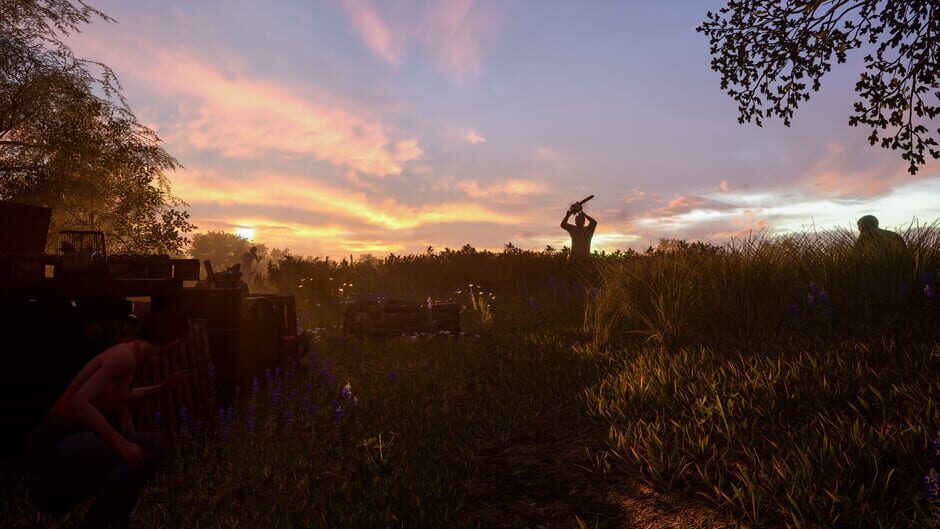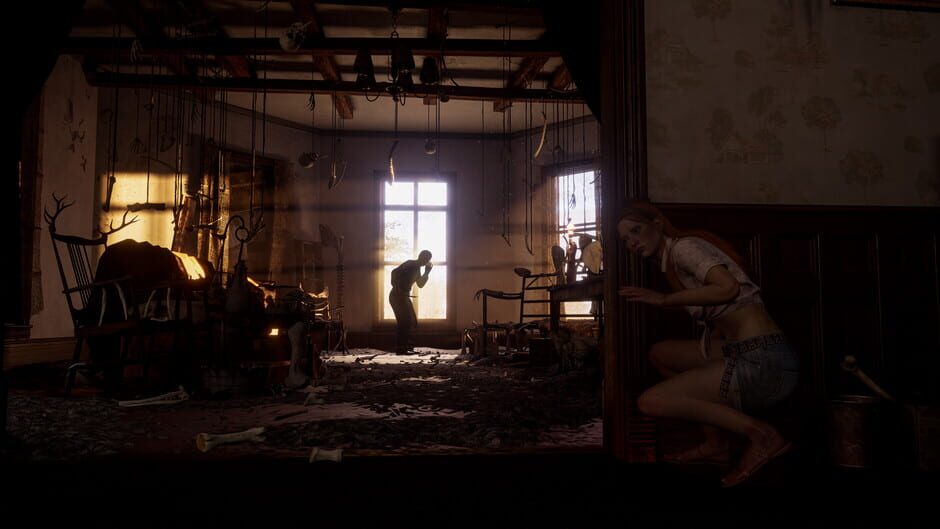Monster Mania: Teamwork & Terror in The Texas Chain Saw Massacre

Monster Mania is a weekly column celebrating the unique and varied monster designs in horror gaming.
The saw may be family, but developer Sumo Digital and publisher Gun Interactive have ingeniously made the iconic Slaughter family operate as a cohesive killing machine with The Texas Chain Saw Massacre. To say I was apprehensive about the technical test would be an understatement. My apprehension stemmed from general fatigue with asymmetrical horror games and the ways in which Gun planned to adapt Tobe Hooper’s 1974 classic of the same name.
While Gun’s tenure with the Friday the 13th: The Game was short-lived (at no fault of their own, I might add) fun, I was curious if their latest asymmetrical endeavor would feel distinctly different rather than simply applying a new slasher coat of paint over a familiar framework. And after my time with the technical test, it became abundantly clear that The Texas Chain Saw Massacre has an identity all its own, and this is entirely thanks to designing its killer designs.
The Texas Chain Saw Massacre remixes the traditional solo killer vs. a group of survivors framework in favor of three killers vs. four survivors. This match structure may sound like an impossibly tricky rendition for the survivor side of the coin, but this is where the indications of a well-balanced approach to multiplayer stem from.

The truth is, I have always found playing as the killer to be teeth-grindingly stressful. Not exactly a winning attitude, but the reality is that despite the killer’s inherent strength contrasted against the nimble but vulnerable survivors, matches live and die by the killer’s mastery of mechanics, given the genre’s near nonexistent margin of error. Rectifying this is The Texas Chain Saw Massacre’s approach to teamwork. The Slaughter family (killers) could choose to primarily focus on hunting down survivors but are far more effective as a cohesive killing unit. Players can choose from the iconic butcher; Leatherface, meat propitiator extraordinaire; The Cook, and the manic Hitchhiker.
Each character is not only pristinely designed to look as if they stepped right out of the tobacco-stained negatives of Hooper’s film, but their abilities and roles feel true to their defining identities. Leatherface is primarily concerned with savagery, specializing in destruction and dealing devastating amounts of damage. The Cook can lock doors hindering survivors’ escape routes and calling out their position on the map. While The Hitchhiker’s macabre ingenuity as a trap maker can further slow survivors’ escape, as well as utilizing his high endurance and nimble frame to be a pursuing pest for survivors.
However, as this is a family affair, what would a Texas Chain Saw Massacre game be without ol’ Grandpa? The decrepit patriarch of the Slaughter family serves as a non-playable blood bag of sorts, as killers must collect blood from buckets around the map and from victims they’ve damaged to satiate Grandpa’s thirst. The more blood you feed Gramps, the quicker he levels up and can begin calling out survivor locations around the map. However, neglecting Grandpa’s blood levels can hurt the killer’s effectiveness at hunting or failing to protect him from survivors who can attack Grandpa to weaken his level.
The versatility of the killers allows for matches to be multifaceted, given the new player options and character purpose. While a player could choose to simply hunt survivors and be rewarded with one of several gratifyingly gory executions, it is more beneficial for players to adhere to their killer’s inherent strengths.

Leatherface’s maim ability makes him ideal for injuring survivors and gathering high volumes of blood for Grandpa, but his strength also makes him suitable for destroying crawl spaces and barricades that survivors use to escape his reach. Leatherface spawns within the basement of the Slaughter Family Farm with the survivors, so stirring up hell with his saw is the ideal way to go. It is also worth noting that revving his saw while in pursuit of a survivor is as gratifying as it is terrifying to be on the other end.
The Cook’s ability to carry locks allows him to not only impede survivors’ planned escape routes but also to trap them in certain areas, making for a kill box. More of a strategist role that can help dictate when and where the family should prioritize setting traps. And finally, The Hitcher’s ability to pursue survivors through crawl spaces and the like while dealing nuisance damage can allow him to funnel survivors into said kill boxes where Leatherface’s hungry saw awaits.
This new meta facet of gameplay makes playing as the killers feel more strategic and teamwork-oriented than simply hunting and killing survivors. While we have only seen a brief glimpse of the killer’s abilities and traits, these unique abilities, paired with the strategic options, give The Texas Chain Saw Massacre a distinct class-based asymmetrical approach. Allowing players to be successful in more ways than one will enable both newcomers to aid their teammates even while learning the game’s mechanics, but ultimately gives matches more ebb and flow for experimentation.
For more horror game reviews, opinions, and features, check out DreadXP.
Categorized:Editorials

